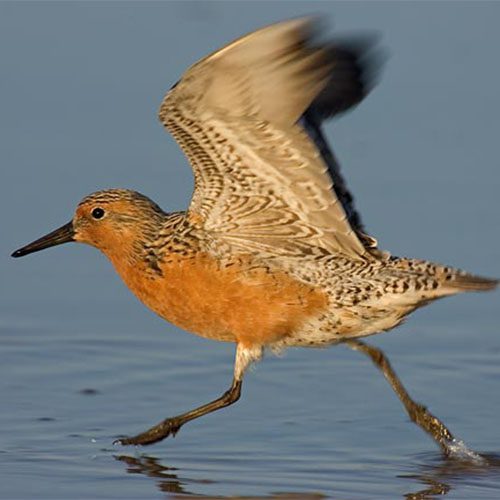Delaware’s Declining Horseshoe Crabs are Critical for Shorebirds
Delaware’s prehistoric horseshoe crabs are crucial for migrating shorebirds’ survival. Both these creatures are greatly in decline. In National Wildlife Federation’s (NWF) recent article “Decline of the Ancient Mariner,” reporter Laura Tangley dives into Delaware Nature Society’s efforts to help them. She also discusses why they are now at risk.
How DelNature and NWF are Helping Horseshoe Crabs
As land and biodiversity coordinator for the Delaware Nature Society, a National Wildlife Federation affiliate, Workman oversees the society’s annual surveys of horseshoe crabs on Slaughter Beach during their May-June spawning season. Conducted six times monthly on more than 20 Delaware Bay beaches in Delaware and New Jersey, the surveys coincide with peak spawning activity, which occurs at high tide on nights with new or full moons.
Beyond counting crabs that late May night in 2021, Workman and his companions also were privileged witnesses to a natural spectacle performed for nearly half a billion years by creatures older than the dinosaurs. Based on fossil records, horseshoe crabs—which are not actually crabs but arthropods more closely related to spiders—began roaming the Earth’s ocean floors at least 450 million years ago. During that time, the animals, which have changed very little, have thrived through countless global upheavals, from multiple ice ages to five major extinction events.
Yet today, many conservationists fear the crabs may be no match for a relative newcomer to the tree of life: Homo sapiens…In recent decades, we’ve also turned the horseshoe crab into a global commodity sought by commercial fishermen, who use the animals to bait eel and whelk traps, and the biomedical industry, which uses extracts from the animals’ blood to screen surgical implants, injectable drugs and vaccines…

The article in greater detail on the path forward to protecting both the horseshoe crabs and the shorebirds that depend on their eggs. These include the Semipalmated Sandpiper, Ruddy Turnstone, and the beloved Red Knot.
Read the full National Wildlife Federation article, “Decline of an Ancient Mariner”
Learn more about Slaughter Beach and Slaughter Beach Ecotourism. Horseshoe Crab programs are taught through our nearby Abbott’s Mill Nature Center.